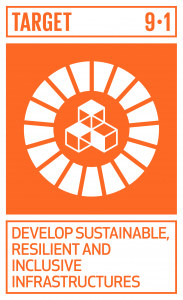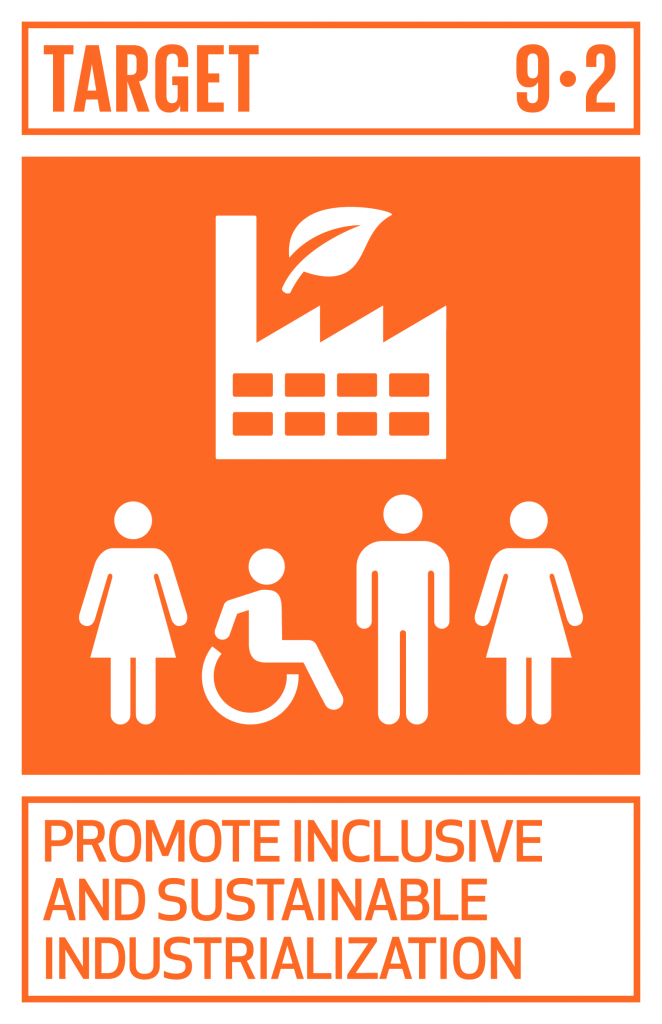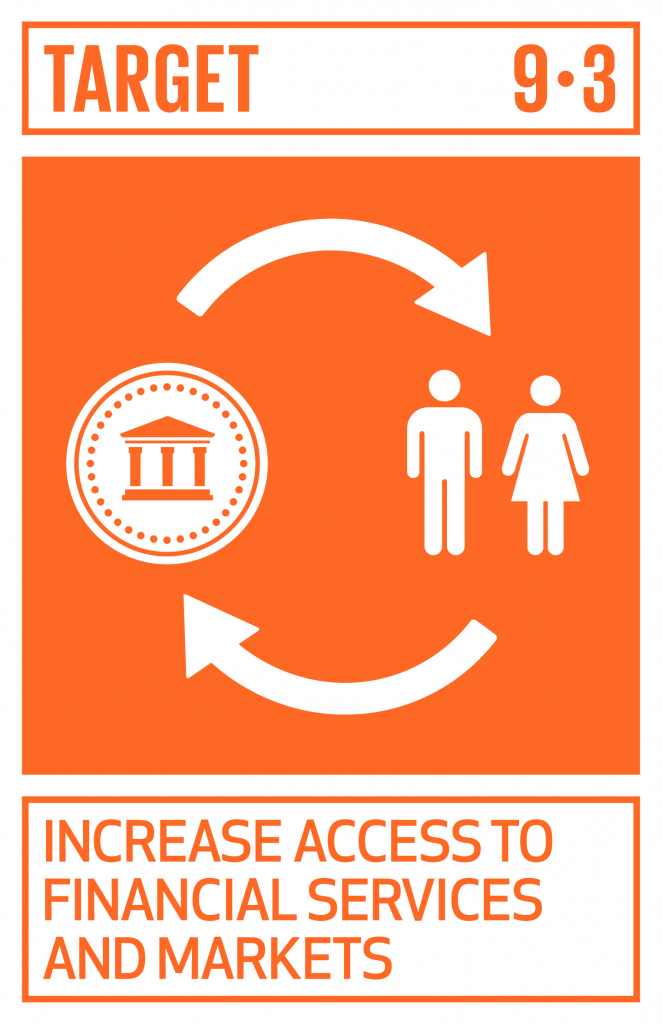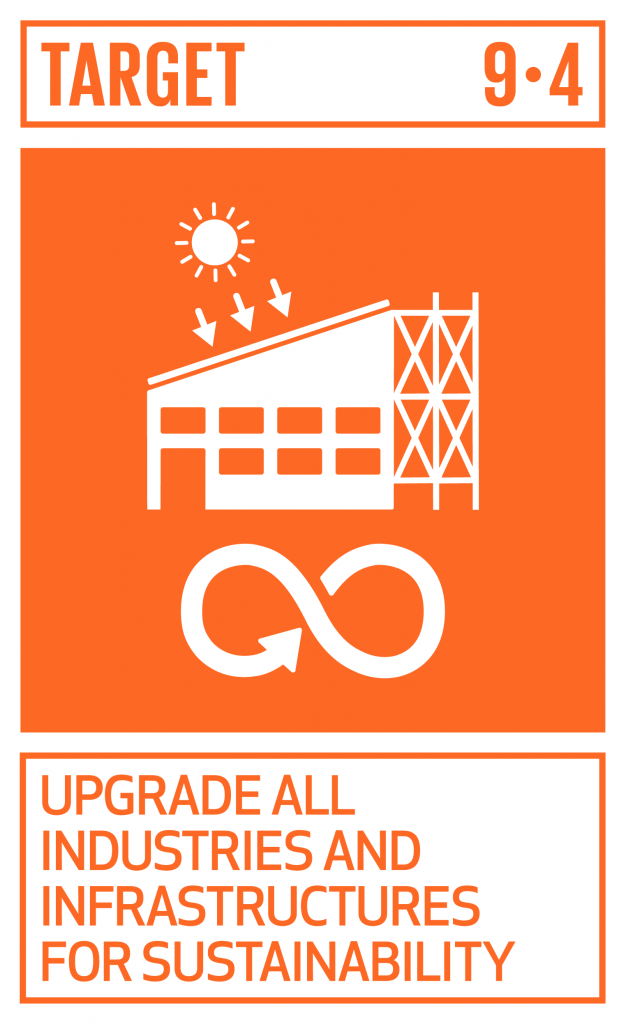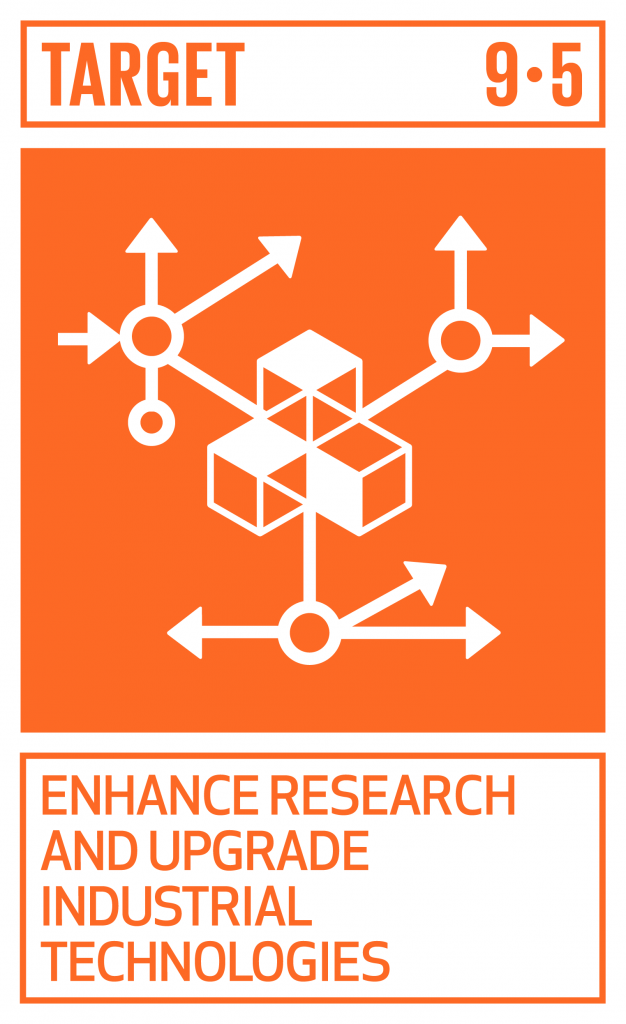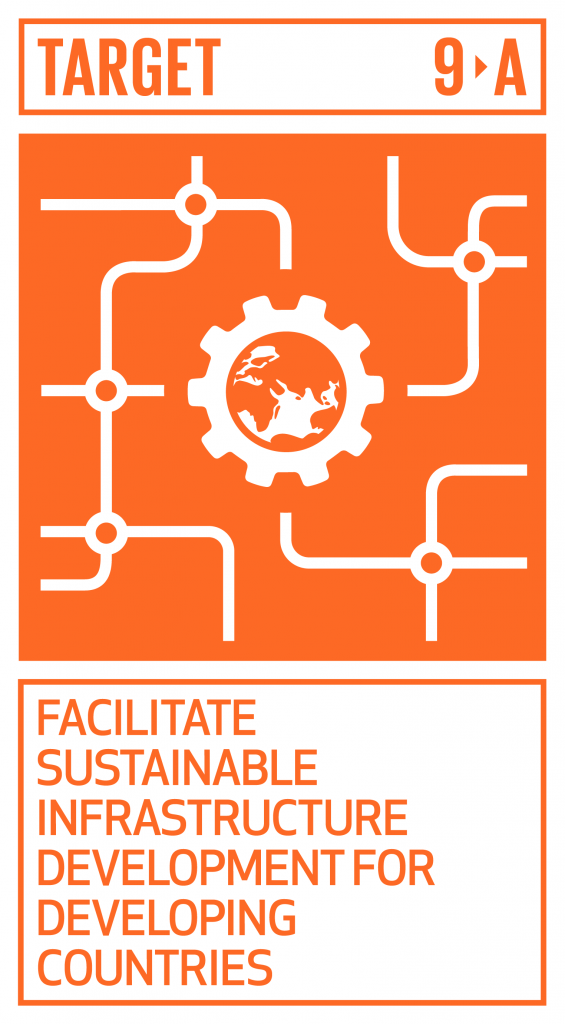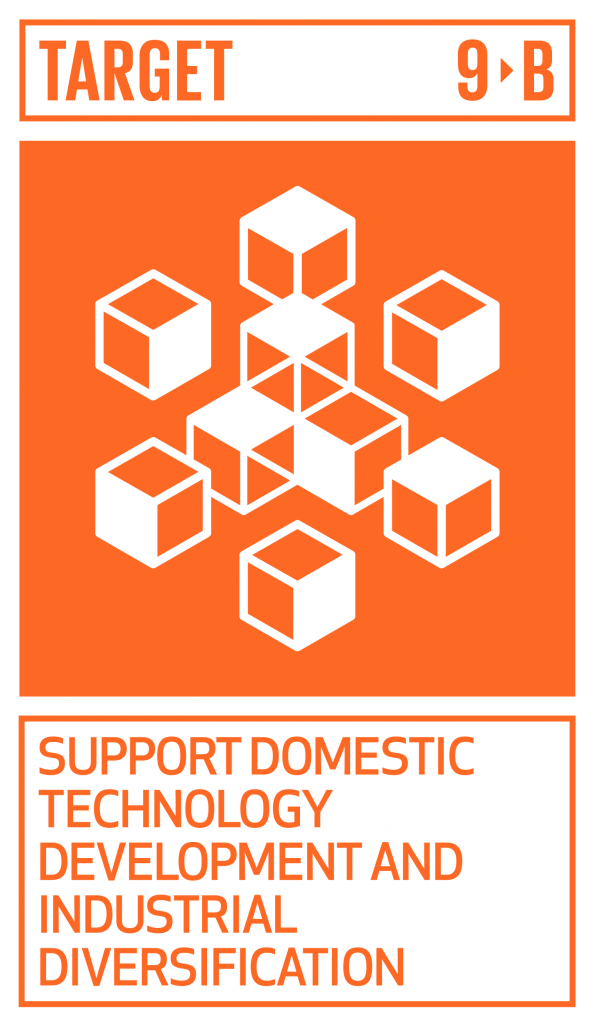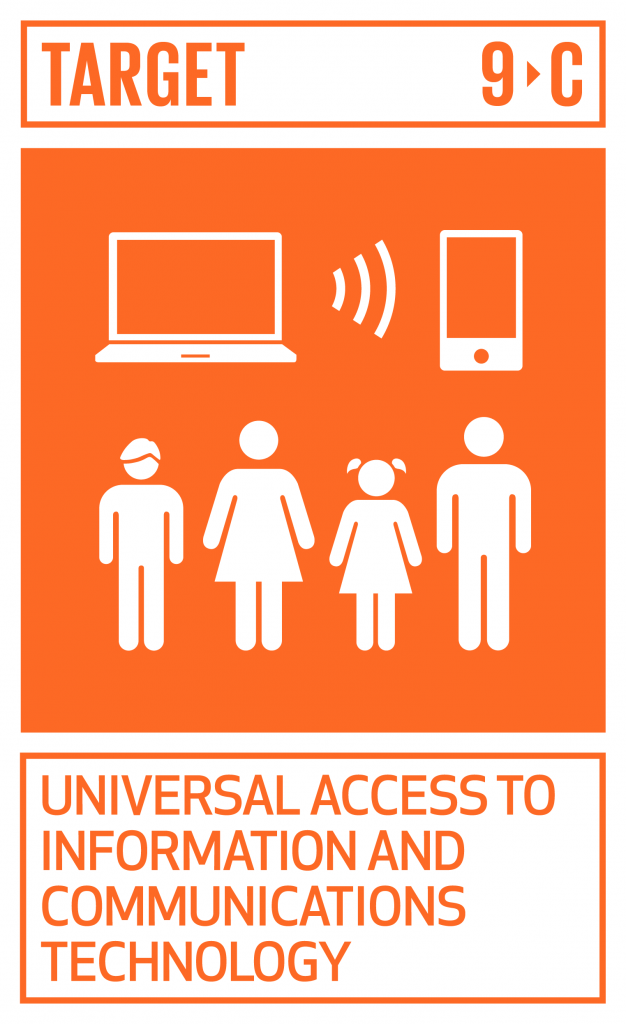SDG 9 – “Build resilient infrastructure, promote inclusive and sustainable industrialization and foster innovation” – is made up of eight targets and 12 indicators. SDG 9 addresses three aspects of sustainable development: infrastructure (9.1, 9.4, 9.A), inclusive industrial development (9.2) including a focus on small-scale enterprises (9.3) and scientific research and technological development (9.5, 9.B, 9.C).
SDG 9 was reviewed at the 2017 High-level Political Forum, along with SDGs 1 (No poverty), 2 (Zero hunger), 3 (Good health and well-being), 5 (Gender equality) and 14 (Life below water). SDG 17 (Partnerships for the goals) is reviewed annually.
Context
Although industrial development implicitly underscored the earlier Millennium Development Goals, SDG 9 is the first standalone development goal that includes industrialization as part of its targets. However, the MDGs did include certain aspects of infrastructure development (MDG 7.C on water and sanitation and 7.D on improving lives for slum dwellers)1 and technological development (MDG 8.F on making available the benefits of technologies, especially information and communications technology, to least developed countries).2
Industrial development is seen by the United Nations as the primary means of income generation and the means through which everyone can enjoy a better standard of living.3 Infrastructure provides facilities for industry and society, while innovation expands technological capacity and leads to the development of new skills.4 The industrialization envisioned by SDG 9 is “inclusive and sustainable” (SDG 9.2), different from the polluting industrial manufacturing and production we are familiar with.
The current industrial trend toward automation and new technology is known as the Fourth Industrial Revolution (Industry 4.0). Societies are experiencing fast and transformative change as result of technological advances, from artificial intelligence to robotics, new energy sources and storage.5 Change is expected to happen quickly and disrupt the way manufacturing and services have traditionally been carried out, bringing with it difficulties as well as benefits.6 Technological innovation is at the root of current industrialization trends, and among other things, can provide a basis for climate-adapted infrastructure and climate-resilient development. Implementation of SDG 9 in least-developed countries dependent on manufacturing for their economies such as Cambodia, Lao PDR and Myanmar, needs to stay aware of Industry 4.0 in order to remain relevant in the coming years. Both Thailand and Vietnam have already embraced Industry 4.0 in their economic development plans, policies and laws.7

Industry 4.0, described as “cyber physical systems” in the visualisation above, is characterized by technological computerized advancements such as artificial intelligence and robotics used in connection with the internet, is considered the current phase of industrial development. Image by Christoph Roser at AllAboutLean.com via Wikimedia. Licensed under CC BY-SA 4.0.
In contrast to the UN, ASEAN considers infrastructure systems the foundation for economic growth and productivity. Thus, in ASEAN 2025, the ASEAN’s community strategic plan, infrastructure (including connectivity) is treated as the umbrella that covers innovation. Aspects of industry, particularly around small-medium enterprises (SMEs), are included under sustainable consumption and production. The focus of infrastructure and connectivity is on five areas:
- road density
- improved sanitation
- improved water sources
- electricity
- mobile cellular subscriptions.
ASEAN’s Master Plan on ASEAN Connectivity 2025 encompasses five similar areas:
- sustainable infrastructure
- digital innovation
- logistics
- regulation
- mobility.
ASEAN has established a Council for Sustainable Infrastructure to support transnational infrastructure planning and development. This combines technological advances with the preservation of traditional features, community and public goods. ASEAN’s work on SMEs is covered by a strategic plan for SME development through the years 2016–2026.8 As ASEAN 2025 is considered a parallel but interrelated process to the SDGs, achieving the goals of ASEAN 2025 will impact the subregion’s ability to implement the SDGs.
SDG 9 forms one part of a three-part nexus known as the infrastructure – inequality – resilience nexus.9 The other two most relevant SDGs are SDG 10 (Reduced inequalities) and SDG 11 (Sustainable cities and communities). This means that any changes that happen in one of the aspects will impact the other two. For example, building better rural roads can help to facilitate women’s freedom of movement while also increasing rural communities’ level of climate resilience.10
SDG 9 is also interlinked with many of the other SDGs. Inclusive and sustainable industrial development is connected to job creation (SDG 8), sustainable livelihoods (SDG 11), better health (SDG 3), food security (SDG 2), environmental protection (SDGs 14 and 15), building resilient cities (SDG 11) and climate change action (SDG 13). Access to infrastructure has implications for rural poverty (SDG 1) and allows rural economies and the agri-food sector to connect with potential workers (SDG 8), while innovative energy infrastructure can help provide clean energy to all (SDG 7). Innovation, understood broadly, enables most, if not all, of the SDGs, including the ways in which energy (SDG 7), food (SDG 2), water (SDG 6), housing (SDG 11) and other goods and services are provided.11
One aspect of infrastructure development that has not been addressed in the SDGs is public participation. This is crucial for inclusive and sustainable development. Environmental impact assessment for large-scale infrastructure projects is already legally required in all the LMCs, but is often not prioritized.12 Meaningful participation by local communities, women, and other vulnerable groups is important to reduce the possibility of conflict, and these voices can provide unique information that can help with preserving livelihoods and natural resources.13 On the other hand vulnerable groups can be compensated appropriately and perhaps receive benefits from the project that is impacting them.
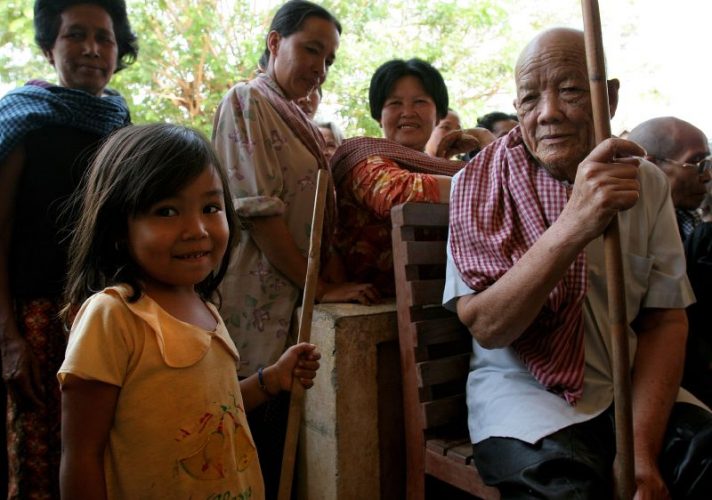
Community consultation meetings are an important part of providing meaningful public participation in an environmental impact assessment process. Photo by Susan Schulman, via Flickr. Licensed under CC BY-NC SA 2.0.
Localisation and regionalisation
Good progress has been made in ASEAN on SDG 9, but ESCAP has noted that in order for the Southeast Asian nations to achieve this goal by 2030 the rate of progress must remain at least the same.14 The greater Asia-Pacific region has identified connectivity as an area of priority to achieve the 2030 Agenda.15 Connectivity includes transport, information and communications technology and trade.16 Specific areas of regional cooperation identified by the member countries include rail, road, and maritime transport, increasing the availability and affordability of broadband internet across the region, and implementing paperless trade.17 As ASEAN’s priorities also include connectivity, the sub-region is well aligned with the Asia-Pacific.
ASEAN is aware that infrastructure development requires regional cooperation as well as national implementation. The subregion has been working to support such cooperation. The first version of ASEAN’s Master Plan on Connectivity suffered from a lack of funding, so the current plan emphasizes the need to enhance resource mobilisation.18 China and ASEAN recently issued a joint statement19 on aligning China’s One Belt One Road Initiative with ASEAN’s MPC. However, China’s previous development in the region has been controversial, not least because of the substantial, non-concessionary loans being provided to develop the Mekong nations and questions about whether the benefits from the projects will actually reach ordinary people.20 Additional support is being provided to the LMCs and China by the Asian Development Bank through the Greater Mekong Subregion Program, which focuses on areas including ICT, energy, transport and trade.
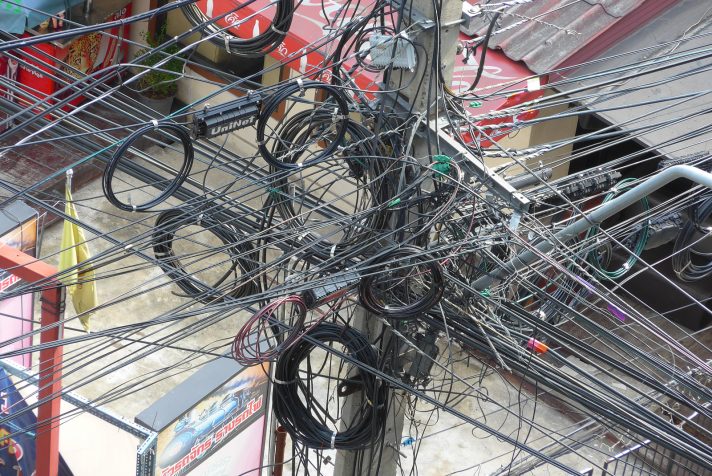
As internet usage increases, especially in urban areas, wire installments become more elaborate. Photo by Peter Morgan via Flickr. Licensed under CC BY-NC SA 2.0.
Regional cooperation on innovation is also on the policy agenda for ASEAN. ASEAN has developed a plan of action on science, technology and innovation for the years 2016–2025, as well as an implementation plan for it.21 The implementation plan was adopted in 2016, and outlines key strategies developed under the ASEAN Committee on Science and Technology.22 In early 2018, the Thai Ministry of Science and Technology organized a regional consultation on “Achieving Sustainable Development Goals through Science, Technology and Innovation” for ASEAN countries to discuss best practices, share experiences and success stories and deliberate on challenges in achieving sustainable development goals.23 Part of the purpose of this consultation was to discuss how enhanced cross-border cooperation between ASEAN countries would benefit the region in achieving the SDGs.24
Means of implementation
Financing for this SDG, especially in infrastructure, is a major challenge for Southeast Asia.25 There is a need, especially in Cambodia, Lao PDR and Myanmar, to explore innovative financing approaches and models that use public resources to diversify and mobilize additional resources.26 Such financing should be funnelled into resilient and sustainable infrastructure (SDG 9.A).27 Infrastructure and technologies that simultaneously reduce time burdens and drudgery, curb carbon emissions and create jobs are key to meet SDG 9, such as water pumps, mini grids, electricity, and clean cookstoves.28
It is also especially important to develop those financing models and instruments that can empower women economically, though supporting women entrepreneurs and business owners and through building infrastructure that can empower women. Increased investments in local infrastructure and entrepreneurship (SDG 9.3) can reduce women’s burden of unpaid care work and provide women with better access to markets and resources.29 Experience from Vietnam shows that investment in rural roads, which facilitates women’s freedom of movement, tends to also have positive effects on private sector productivity, poverty reduction, school enrolment, access to health services and economic growth.30
The ADB and ASEAN member nations have established the ASEAN Infrastructure Fund (AIF) to address the region’s infrastructure development needs. The AIF provides loans to finance infrastructure investment projects in the transport, energy, water and sanitation, environment and rural development and social infrastructure sectors.31 As at June 12, 2018, Laos, Myanmar and Vietnam have active projects in the AIF/ADB pipeline, with one more proposed by Myanmar.32
Technology is the other key resource required to implement SDG 9. The ASEAN Plan of Action on Science, Technology and Innovation (APASTI) 2016–2025 Implementation Plan addresses supporting research and development (SDG 9.B), while ICT (SDG 9.C) is covered by ASEAN 2025.33
Follow up and review, monitoring and evaluation
As at May 2018, the majority of the Indicators for SDG 9 are considered Tier I,34 which means that data are produced regularly and available for at least 50 percent of countries and population in all regions. Only one indicator (9.1.1) remains at Tier III (no data, methodology not yet clear), and only two indicators (9.3.1, 9.3.2) are Tier II (methodology clear but data not yet available).
| Indicator | Tier | Custodian Agency | Notes |
|---|---|---|---|
| 9.1.1 | III | World Bank | Methodology has been developed and is available here. According to the September 2017 workplan the methodology still needed to be vetted by the IAEG-SDG; this is the most recent update. Methodology has already been piloted for eight countries (primarily African) and will be expanded to 30 countries between 2016–2018.426 |
| 9.1.2 | I | ICAO, ITF-OECD | -- |
| 9.2.1 | I | UNIDO | -- |
| 9.2.2 | I | UNIDO | -- |
| 9.3.1 | II | UNIDO | Reclassified from Tier III to Tier II in November 2017.427 |
| Data not yet available on UN Stats SDG Indicator Global Database as at June 14, 2018. | |||
| 9.3.2 | II | UNIDO, World Bank | Reclassified from Tier III to Tier II in November 2017.428 |
| 9.4.1 | I | UNIDO, IEA | -- |
| 9.5.1 | I | UNESCO, UIS | -- |
| 9.5.2 | I | UNESCO, UIS | -- |
| 9.A.1 | I | OECD | Data not yet available on UN Stats SDG Indicator Global Database as at June 14, 2018. |
| 9.B.1 | I | UNIDO | Reclassified from Tier II to Tier I in November 2017.429 |
| 9.C.1 | I | ITU | -- |
Chart created by ODM, July 2018. Data available here.
Data for 9.5.1 and 9.5.2 in the LMCs is incomplete – no data are available for 2015. There are no data for Lao PDR or Myanmar for 9.2.2 and 9.B.1. Finally, data on Lao PDR are missing for 9.4.1.
The infographic below was created by ODM, and shows visualisations of selected SDG 9 indicators. For a dataset of all available data for SDG 9, please see here.
Even though the indicators for SDG 9 are comparatively well developed, there remains concerns about their efficacy. One critique of SDG 9.C.1 is that it does not monitor whether individuals are actually using the mobile networks that cover them, whether they are affordable, or access and use of the internet. Thus it has been argued that the SDG monitoring framework will not produce sufficient knowledge to support the implementation of target 9.c.35
References
- 1. United Nations. Goal 7 – Ensure Environmental Sustainability. Accessed June 12, 2018.
- 2. United Nations. Goal 8 – Develop a Global Partnership for Development. Accessed June 12, 2018.
- 3. United Nations. Goal 9: Build resilient infrastructure, promote sustainable industrialization and foster innovation. Accessed February 22, 2018.
- 4. UN DESA. 2016. Goal 9: Build resilient infrastructure, promote inclusive and sustainable industrialization and foster innovation. Accessed June 13, 2018.
- 5. World Economic Forum and Asian Development Bank. 2017. ASEAN 4.0: What does the Fourth Industrial Revolution mean for regional economic integration? Accessed February 22, 2018.
- 6. Ibid.
- 7. National Broadcasting and Telecommunications Commission. 2016. THAILAND 4.0 – ประเทศไทย ยุค 4.0 – (English). Accessed March 1, 2018. Prime Minister Nguyen Phuc. May 5, 2017. Directive 16/CT-TTg on strengthening access to the Fourth Industrial Revolution. https://thuvienphapluat.vn/van-ban/Dau-tu/Directive-16-CT-TTg-strengthening-of-the-ability-to-access-the-Fourth-Industrial-Revolution-361701.aspx. Accessed February 27, 2018.
- 8. ASEAN. 2017. Complementarities between the ASEAN Community Vision 2025 and the United Nations 2030 Agenda for Sustainable Development: A Framework for Action. Accessed June 13, 2018.
- 9. United Nations. 2016. “Chapter 2: The Infrastructure – Inequality – Resilience Nexus” in the Global Sustainable Development Report 2016. https://sustainabledevelopment.un.org/content/documents/10786Chapter2_GSDR2016.pdf. Accessed June 12, 2018.
- 10. High-Level Political Forum on Sustainable Development. 2017. 2017 HLFP Thematic Review of SDG-9: Build resilient infrastructure, promote inclusive and sustainable industrialization and foster innovation. https://sustainabledevelopment.un.org/content/documents/14363SDG9format-revOD.pdf. Accessed June 12, 2018. See also https://sustainabledevelopment.un.org/content/documents/10786Chapter2_GSDR2016.pdf.
- 11. Ibid.
- 12. Mekong Partnership for the Environment. 2017. Making the Case: Effective Public Participation is Good for Business in the Mekong Region. Accessed March 1, 2018.
- 13. Nguyen Ngoc Ly, Nguyen Thi Yen, and Phan Quynh Huong. 2015. Final Report; Assessing Women’s Engagement in Environmental Impact Assessments on Infrastructure Projects in Vietnam: Recommendations for Policy and Participation in EIA. Accessed February 23, 2018.
- 14. UNESCAP. 2017. ASEAN SDG Baseline. http://www.unescap.org/sites/default/files/publications/ASEAN_SDG_Baseline_0.pdf. Accessed June 13, 2018.
- 15. UNESCAP. 2017. Regional Road Map for Implementing the 2030 Agenda for Sustainable Development in Asia and the Pacific. Accessed June 13, 2018.
- 16. Ibid.
- 17. Ibid.
- 18. ASEAN Secretariat. 2017. Assessment of the Implementation of the Master Plan on ASEAN Connectivity 2010. http://asean.org/storage/2017/08/8.-July-2017-MPAC-2010.pdf. Accessed March 1, 2018.
- 19. ASEAN and China. 2017. Joint Statement Between ASEAN and China on Further Deepening the Cooperation on Infrastructure Connectivity. Accessed February 24, 2018.
- 20. Sebastian Biba. 2016. China drives water cooperation with Mekong countries. Accessed February 24, 2018.
- 21. ASEAN. 2017. ASEAN Plan of Action on Science, Technology, and Innovation: Implementation Plan. Accessed June 12, 2018.
- 22. Ibid.
- 23. ASEAN NEXT. Concept Note and Tentative Agenda. http://apctt.org/sites/default/files/ASEAN_Next_Agenda.pdf. Accessed June 12, 2018.
- 24. Ibid.
- 25. ESCAP 2017. Southeast Asia Subregion Challenges and Priorities for SDG Implementation. Accessed June 13, 2018.
- 26. High-Level Political Forum on Sustainable Development. 2017. 2017 HLFP Thematic Review of SDG-9: Build resilient infrastructure, promote inclusive and sustainable industrialization and foster innovation. https://sustainabledevelopment.un.org/content/documents/14363SDG9format-revOD.pdf. Accessed June 12, 2018.
- 27. Ibid.
- 28. Ibid.
- 29. Ibid.
- 30. High-Level Political Forum on Sustainable Development. 2017. 2017 HLFP Thematic Review of SDG-9: Build resilient infrastructure, promote inclusive and sustainable industrialization and foster innovation. https://sustainabledevelopment.un.org/content/documents/14363SDG9format-revOD.pdf. Accessed June 12, 2018. See also United Nations. 2016. “Chapter 2: The Infrastructure – Inequality – Resilience Nexus” in the Global Sustainable Development Report 2016. https://sustainabledevelopment.un.org/content/documents/10786Chapter2_GSDR2016.pdf. Accessed June 12, 2018.
- 31. Asian Development Bank. ASEAN Infrastructure Fund. Accessed June 12, 2018.
- 32. Asian Development Bank. 2018. Projects: ASEAN Infrastructure Fund. Accessed June 12, 2018.
- 33. ASEAN. 2017. ASEAN Plan of Action on Science, Technology, and Innovation: Implementation Plan. Accessed June 12, 2018.
- 34. IAEG-SDGs. 2018. Tier Classification of SDG Indicators 11 May 2018. Accessed June 12, 2018.
- 35. High-Level Political Forum on Sustainable Development. 2017. 2017 HLFP Thematic Review of SDG-9: Build resilient infrastructure, promote inclusive and sustainable industrialization and foster innovation. https://sustainabledevelopment.un.org/content/documents/14363SDG9format-revOD.pdf. Accessed June 12, 2018.
